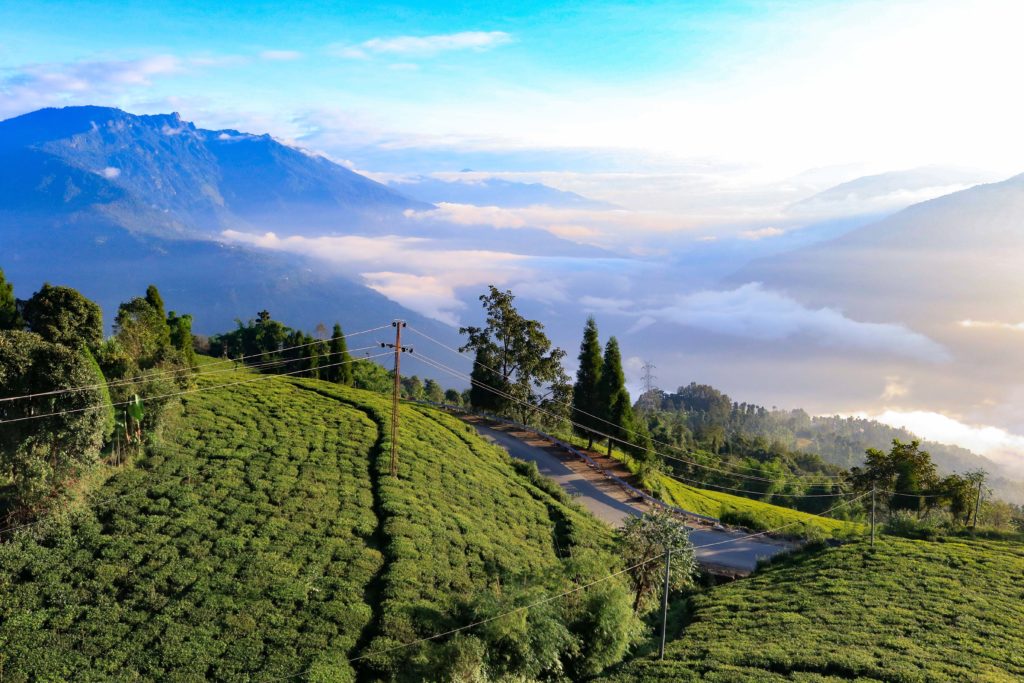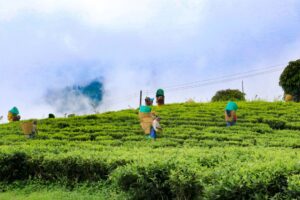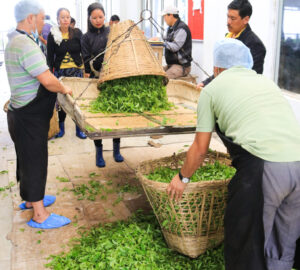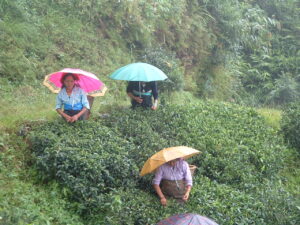International Tea Day: Tea, tourism & treat for travellers
Over the last decade, among the new niches of tourism emerging in India is tea tourism. With hundreds of tea estates spread over thousands of acres in the Himalayan foothills or in the Nilgiris, India, one of the top tea producers in the world, is experimenting with tea tourism. “Ambling through a sprawling tea plantation with greenery all around in the early hours of the day, watching a group of local women plucking two leaves and a bud at a fast pace and collecting them into baskets slung on their shoulders is a winning sight for tourists,” says Aftab Kola, a Darjeeling-based tour operator.
Kola says he has been arranging tea estate tours for tourists from different states in India as well as for those coming from other countries. “Everyone’s tour to Darjeeling is incomplete without experiencing tea gardens,” he adds.
Tour operators like Kola give tea-buffs and tourists a closer understanding of the tea industry by organising tea tourism at places like Assam, West Bengal, Tamil Nadu, Kerala and Karnataka. These tours include staying in the tea estates, visit a tea factory where tourists get to experience how the fresh green leaves are withered through the rolling, drying and shifting stages, grading and packaging and followed by a tea-tasting session where they can sip some of the finest tea that is grown in that area.
Here is are few popular tea tourism destinations in India that are a must-visit for all tea-lovers.
Jorhat, Assam
Situated in the Brahmaputra Valley in Assam, Jorhat is often referred to as the ‘Tea Capital of the World’. One of the most popular and oldest tea estates in Jorhat, the Gatoonga Tea Estate was established more than a century ago and offers colonial-styled guest rooms. While staying at the tea estate, tourists will be able to enjoy life at the tea gardens and visit a factory to see through the various stages of tea making.
Various other tea gardens on the outskirts of Jorhat are also located close to many national parks and wildlife sanctuaries such as Kaziranga, Orang, Nameri, Dibru Saikhowa and Hoolongpar Gibbon Wildlife Sanctuary. Historical places like Sibasagar or the world’s largest river island at Majuli is also worth visiting on one’s tour to a nearby tea garden.
The best time to visit Jorhat is from mid-May to June end, for the best tea experience. Tea production continues until early December, but the quality of the tea steadily decreases. A Tea Festival is held in Jorhat every November that attracts tea-lovers from all over the world.
Darjeeling, West Bengal
Darjeeling, apart from being one of India’s most popular hill stations, is surrounded by tea plantations that produce prized light coloured, floral smelling tea. Around 25 pc of India’s total tea output comes from Darjeeling itself.
Most tea estates are located just north of town and offer guided tea factory tour in various parts of Darjeeling. Closer to Darjeeling in the Lebong Valley, one can find many century-old bungalows-turned-hotels that have been tastefully restored. Most of these hotels offer different kinds of tea experiences, starting with tea in bed when one wakes up till special teas for a good sleep at night.
About an hour south of Darjeeling, Kurseong also offers homestay accommodations with local villagers and tourists can join them in tea plucking in the morning. Further south, two hours from Darjeeling and only 15 minutes from Bagdogra Airport, Nuxalbari Tea Estate is noteworthy for being owned and operated completely by women.
Munnar, Kerala
As tourists enter the popular Munnar hill station in Kerala they are greeted by miles of lush tea plantations. It is also home to India’s first Tea Museum, situated in the Nallathanni Estate.
Visitors can take a look through the history of tea production in India. Apart from this they can visit Kundale Tea Plantation which is surrounded by a lake and witness the tea picking and making process while staying in the old colonial bungalows at The Tea Sanctuary.
One can also visit the beautiful gardens of Kannan Devan Hills Plantations Company or KDHP, which is the first tea company in India to be owned by employees. Nearly all of its employees are shareholders and play an essential role in the development of the business. This tea company consists of seven tea gardens that cover over 24,000 hectares. The tea plantations produce more than 22 million kg of tea each year and also attract thousands of tourists annually.
Coonoor, Tamil Nadu
This region in Tamil Nadu is well known for its dark and aromatic variety of tea. Tea growing is the most important industry of the region and has been ongoing for more than a century now. An ideal tea tour here starts with a visit to the Highfield Tea Factory where one can view tea manufacturing.
Tourists can also visit the famous Tranquilitea Tea Lounge where the exotic Nilgiri tea is served and also take a tour of the aromatic tea gardens. More than half of the tea produced in the Nilgiris serve the foreign countries and often find their way in the tea bags. One can also plan to visit Ooty hill station from the Nilgiri plantations that are situated just on the outskirts.
Darang, Himachal Pradesh
The mystical lands of Himachal Pradesh call everyone to savour its unrivalled experience and beauty. Add in the aromatic tea gardens of the Darang Tea estate, and it becomes a heavenly abode for all travellers and tea-lovers.
Darang tea gardens symbolise the true serenity of the Himalayas. There are lots of offbeat activities at the estate for travellers. Tourists can go trekking around the estate and wander in the adjacent forest witnessing some of the peculiar flora and fauna of the Himalayas or they can go angling in the Beas river which flows nearby. The friendly service at the estate gives a great exposure in understanding the tea culture in India while tasting tea from one of the finest plantations of the country.













